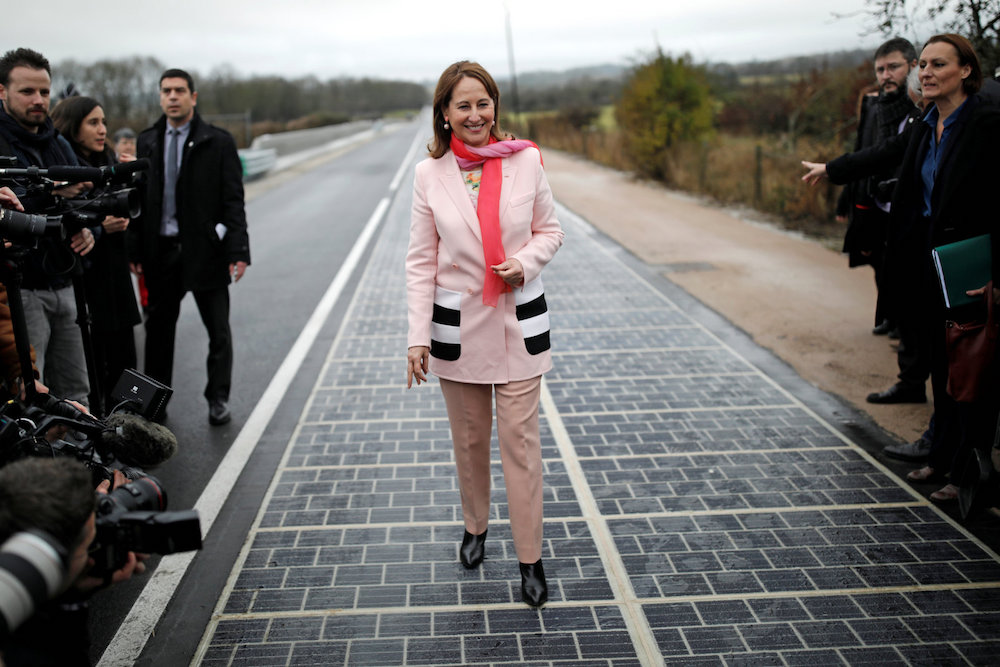
The tiny town of Tourouvre-au-Perche in Normandy, France no longer has to worry about how it will power its street lights. The Sun will handle that.
The road, called the Wattway, was officially opened Thursday by French Minister of Ecology Ségolène Royal and Mayor Guy Monhée, according to a statement from the environmental ministry.
The stretch of road is covered in photovoltaic panels, which transform solar energy into electricity.
“This new technology is unprecedented,” the ministry said in its statement.
The world’s first solar road is part of a government-sponsored experiment to see if turning France’s highways into power stations could be a sustainable way to generate energy.
The one-kilometre (half-mile) called “Wattway” is covered with 2,800 square metres (30,000 square feet) of resin-coated solar panels and was hooked up to the local power grid. It should generate enough electicity to power local street lighting.
“This new use of solar energy takes advantage of large swathes of road infrastructure already in use … to produce electricity without taking up new real estate,” Royal said in a statement.
It has taken six years to find the right material that can carry the weight of lorries that regularly drive along this route, and the experiment has received a €5 million state subsidy – a high cost for a solar plant with a relatively small power output.
The energy produced costs 13 times as much as rooftop panels, with each kilowatt-peak – the unit of measure for solar energy – generated by Wattway currently costing €17, compared with €1.30 for a major rooftop installation.
But Royal pointed out that, “as we develop more roads like this, the costs will be driven sharply down”.
She announced a four-year plan “for the national deployment of solar highways” with future projects already slated for western Brittany and southern Marseille.

A road to energy independence?
An average of 2,000 cars use the road in Tourouvre each day, testing the resistance of the panels for the project carried out by French civil engineering firm Colas, a subsidiary of construction giant Bouygues.
Colas says that, in theory, France could become energy independent by paving only a quarter of its million kilometres of roads with solar panels.
Roadways are occupied by cars only around 20 percent of the time, leaving vast expanses of surface exposed to soak up the sun’s rays. Similar projects are under exploration in Germany, the Netherlands and the United States.
Sceptics are waiting to see whether the panels can withstand the ravages of time and weather, as well as the beating they will take from big trucks.
Solar panels installed on a 70-metre stretch of a cycling lane north of Amsterdam experienced some damage last winter but the problem has been resolved, the project’s company TNO said.
One drawback of the highway system is that solar panels are more effective when angled towards the sun, typically on slanted rooftops, than when they are laid on a flat surface like a road.










